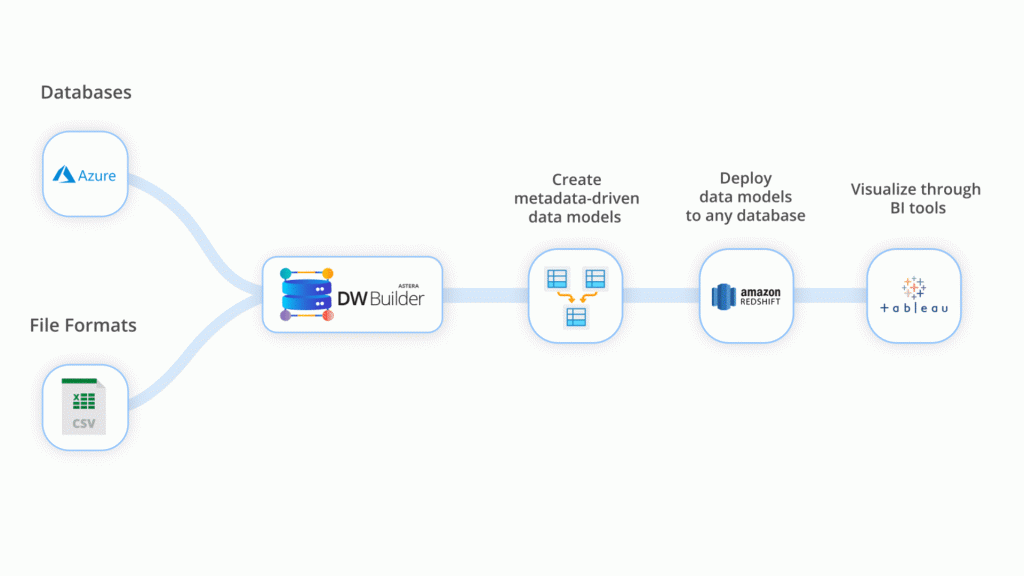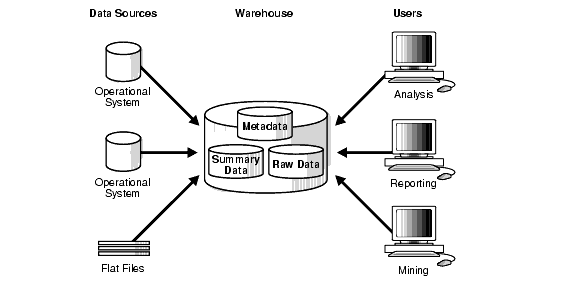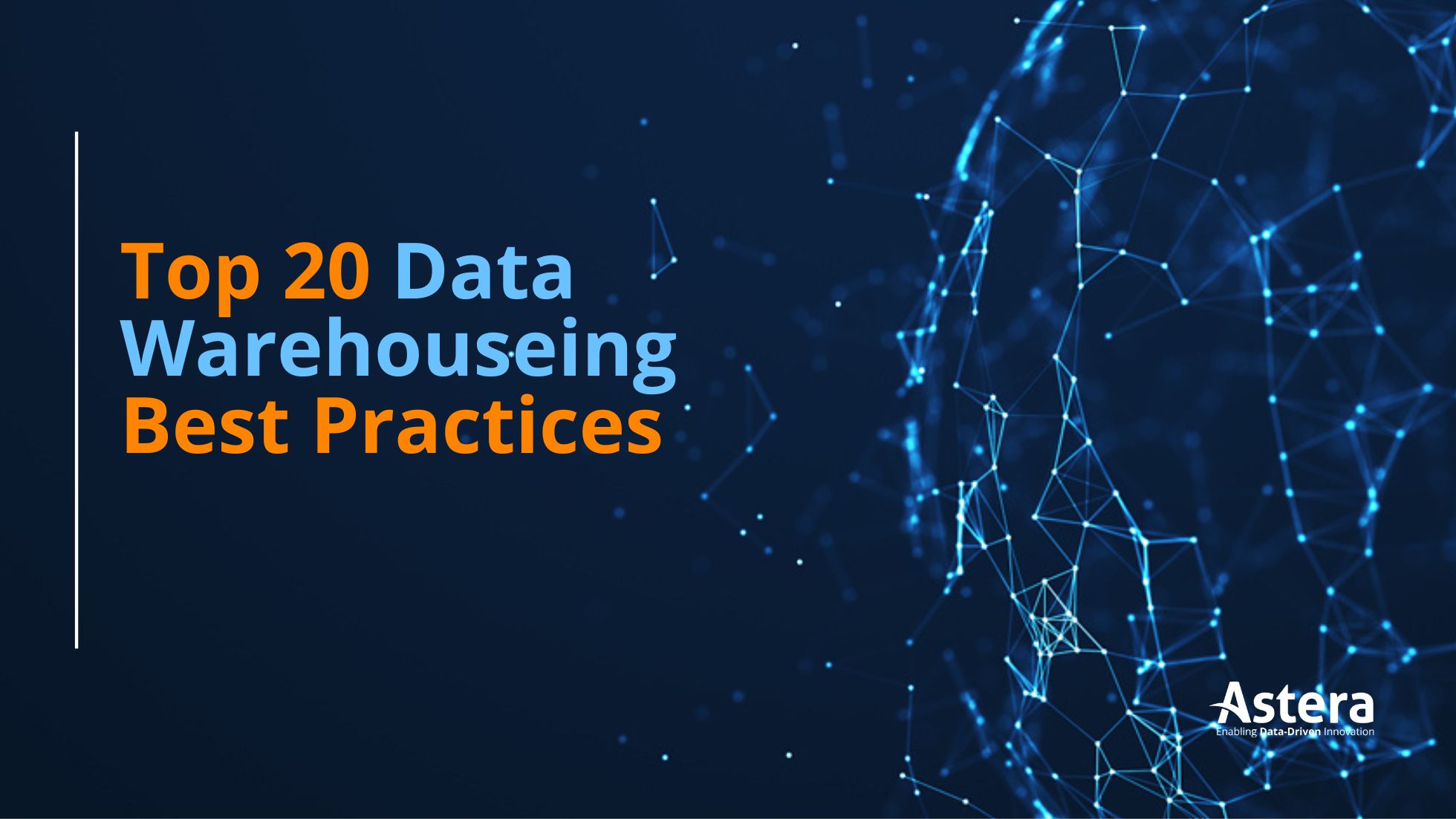
Top 8 Data Warehouse Tools for 2024
The global data warehousing tools market touched $31.85 billion in 2023, up from $27.93 billion in 2022. The numbers represent the importance and increasing prevalence of data warehousing in the business world. So, what is the reason behind this growth? Why are data warehouse tools suddenly becoming the center of attention?
The primary reason behind the increasing popularity of data warehousing tools is the growing amount of data. Data warehousing tools are the best solution to tame the increase in volume and variety of data. They can consolidate and organize vast data volumes from diverse sources and facilitate advanced analytics.
In this article, we will discuss all about data warehouse tools, their benefits and some of the top options in the market.
Let’s dive in!
TL; DR? Here’s the list of the best data warehouse tools to consider in 2024:
- Astera
- Snowflake
- SAP Datawarehouse Cloud
- Oracle Exadata
- Panoply
- Teradata Vantage
- Microsoft Azure
- Hevo Data
What are Data Warehouse Tools?
Data warehouse tools are software applications or platforms designed to facilitate the process of collecting, storing, managing, and analyzing large volumes of data from various sources, such as databases, spreadsheets, cloud services, and even IoT devices. This centralization streamlines data management and eliminates the need to navigate through multiple data silos.
The main purpose of a data warehouse is that it makes it easier for users to retrieve and analyze data. Data warehouse tools allow you to define the level of detail or granularity at which data is stored, ranging from highly aggregated data to fine-grained, transaction-level data.
You can also set up a data mart, a subset of a data warehouse that is focused on a specific business area or department.
How do Data Warehouse tools help?
To implement the data warehousing architecture, it is important to choose the right data warehouse tool to streamline and automate many of the tasks. Let’s start with the basics:
- Data extraction: The first and foremost thing that a data warehousing tool does is that it extracts information from all operational sources of an organization such as customer databases.
- Data transformation: The extracted information is then cleaned and validated, so that it is fit to be sent into a data warehouse. Data warehouse tools offer a range of transformation capabilities to clean, standardize, and enrich data.
- Data loading: Next you can load the data in the destination. You can opt for any loading strategy, such as full loads, incremental loads, and real-time streaming, depending on what best suits your needs.
- Data Modelling: Once your data is in the data warehouse, you can use the tools features to define the relationships in your data. You can either use star schema or snowflake schema, which consists of fact tables (containing measures) and dimension tables (containing attributes). For example, fact can be “Sales Revenue” that represents the quantitative data related to each sale transaction, such as the total amount of money generated by each sale. On the other hand, “Product” can be a dimension that provides details about the products sold. It includes attributes like “Product Name,” “Product Category,” “Manufacturer,” and so on.
- Query and Analysis: These tools provide query and reporting capabilities that allow you to extract insights from the data warehouse. You can write SQL queries or use graphical interfaces to create reports and visualizations for analysis.
Top 8 Data Warehouse Tools
1. Astera Data Warehouse Builder
Astera data warehouse builder or ADWB is an agile meta driven data warehouse tool that simplifies and automates all data warehousing processes, from design and development all the way to deploying and publishing data, giving you a single platform to build on-premises or cloud data warehouses end-to-end. Here are some important features of ADWB that makes it an ideal data warehousing tool:
- Native connectors built-in to support seamless integration with popular databases, web applications, and leading cloud service providers, such as Amazon, Azure cloud, SQL Server, PostgreSQL, Vertica, Google Cloud, Salesforce, HubSpot, SAP Hana, and others, ensuring smooth data integration across various platforms.
- Robust ETL and ELT engines with advanced capabilities to efficiently handle extensive workloads and optimize query performance, enabling fast and efficient data processing.
- Schema-agnostic data modeling and intuitive no-code development features significantly reduce the time required to bring your data warehouse into production, allowing for quicker implementation and deployment.
- Comprehensive data model verification module that ensures the deployment of dimensional models or data vaults without errors, ensuring data integrity and accuracy throughout the data warehousing process.
- Unified metadata-driven architecture that facilitates the integration of structured, semi-structured, and unstructured data from diverse sources, enabling a holistic view of data and maximizing data insights.
- Granular role-based access control mechanism that enables fine-grained control over user roles, granting and restricting access to different users based on their specific needs, enhancing data governance and security measures.
2. Snowflake
Snowflake is a cloud-based data warehousing platform that offers a fully managed and scalable solution for data storage, processing, and analysis. It is designed to address the challenges of traditional on-premises data warehousing by providing a modern and cloud-native architecture. Here are the key features of Snowflake:
- Snowflake is built from the ground up for the cloud. It runs entirely in cloud environments like AWS, Azure, and Google Cloud Platform (GCP).
- The platform uses a multi-cluster, shared data architecture, which means that multiple users and workloads can concurrently access and analyze the same data without interference.
- The tool uses a variety of optimization techniques, such as automatic indexing and caching, to speed up query execution.
- You can use Snowflake native data loading capabilities or Snowflake’s Snowpipe for real-time data ingestion.
- Snowflake also has a Time Travel feature for data versioning and history tracking.
3. SAP Datawarehouse Cloud
SAP Data Warehouse Cloud is a cloud-based data warehousing solution developed by SAP. It is designed to provide organizations with a modern, scalable, and integrated platform for data storage, data modeling, data integration, and analytics. Here are key features and aspects of SAP Data Warehouse Cloud:
- The platform allows you to integrate data from a wide range of sources, including on-premises databases, cloud-based applications, spreadsheets, and more
- Data Warehouse Cloud features a semantic layer that abstracts complex data structures and provides a business-friendly view of data.
- You can perform ad-hoc queries, create reports, and build visualizations using integrated business intelligence and analytics tools.
- You can use the drag-and-drop interface, enabling them to create data models, define relationships, and build hierarchies without the need for extensive coding.
4. Oracle Exadata
Oracle Autonomous Data Warehouse (ADW) is a cloud-based data warehousing service offered by Oracle Corporation. It is designed to simplify data management and analytics tasks by automating many of the traditionally complex and time-consuming processes associated with data warehousing. Here are key aspects and features of Oracle Autonomous Data Warehouse:
- It supports data integration and ETL (Extract, Transform, Load) processes with built-in features for data loading and transformation.
- ADW supports various data types and models, including relational, JSON, spatial, and graph data, making it versatile for diverse analytical requirements.
- Oracle ADW is a fully managed service, meaning Oracle handles infrastructure provisioning, configuration, patching, backup, and other administrative tasks.
5. Panoply
Panoply is a managed ELT and a cloud data warehouse platform that allows users to set up a data warehouse architecture. The cloud data warehouse eliminates the need for you to set up and maintain your own on-premises data warehouse, saving time and resources.
Here are the key features of Panoply:
- Various built-in connectors to ingest data from multiple sources
- Built-in scheduler for automation
- Data transformation capabilities to clean, transform, and enrich data using SQL, Python, or other scripting languages.
- Columnar storage format for optimized query performance
6. Teradata Vantage
Teradata Vantage is a data warehousing and analytics platform designed to handle large volumes of data and support complex analytical workloads. The platform uses SQL as its primary query language, which means it is mostly meant for users with SQL skills. Here are some key aspects of Teradata Vantage for data warehousing:
- Various sources, including data warehouses, data lakes, on-premises systems, and cloud platforms.
- Built-in analytics functions and supports integration with popular data science and machine learning tools.
- Workload management features to ensure that different types of queries and analytics workloads are appropriately prioritized and allocated resources.
7. Microsoft Azure
Microsoft Azure also offers data warehousing capabilities. If you have data stored in Azure Blob storage or in a data lake, you can introduce analytical capabilities using Azure Synapse, or with Azure HDInsight. If you want to move data from the source to the data warehouse, you can do it using through Azure Data Factory or Oozie on Azure HDInsight.
Azure divides data warehousing options into two: if you have small to medium data sets that don’t require complex queries, then you can use symmetric (SMP-based) data warehouses. In case you are dealing with big data, it is better to opt for massively parallel processing system (MPP). Here are some key features of Microsoft Azure data warehouse:
- The platform offers built-in analytics capabilities, including integration with Azure Machine Learning and Power BI.
- It comes with MPP architecture, which distributes data and queries across multiple nodes, and allows you to process large data sets quickly and efficiently.
- It also integrates with various data sources, both on-premises and in the cloud, making it easier to ingest and manage data from different systems.
8. Hevo Data
Hevo, is a cloud-based data integration platform designed to streamline the process of collecting, transforming, and loading (ETL) data into data warehouses and other destinations. While it’s not a data warehousing tool itself, it facilitates data ingestion and integration. Here are some key features and aspects of Hevo for data warehousing:
- A wide range of pre-built connectors and integrations to collect data from various sources, including databases, cloud applications, file systems, and more.
- Visual data transformation interface that enables you to clean, enrich, and transform data as it flows into the data warehouse.
- Hevo allows you to define data models and schemas, ensuring that data is structured appropriately for analysis within the data warehouse.
- Includes data quality features to help you identify and address data quality issues during the ETL process.

4 Important Features that Data Warehouse Tools Should Have
1. Data Cleansing
Many companies use data warehousing to leverage historical data for critical business decisions. Hence, ensuring that only high-quality data is loaded into a data warehouse through data processing is essential. This can be done by making data cleansing a part of the data warehousing process, which can help detect and remove invalid, incomplete, or outdated records from the source datasets.
2. Data Transformation and Loading
Data transformation involves modifying data into a compatible format with the target system, such as a database, to simplify data loading.
Many data warehouse management tools offer built-in transformations. These steps include aggregate, lookup, join, and filter, to streamline the data integration step in a data warehouse. Integrated data provides a holistic data profile and is necessary for effective analysis.
3. Data Governance and Metadata Management
Data Governance and Metadata Management play critical roles in a data warehouse tool. Data governance ensures the integrity, compliance, and effective management of data through policies, processes, and controls. It encompasses activities like monitoring data quality, tracking data lineage, implementing data security measures, and adhering to data privacy regulations.
On the other hand, metadata management focuses on managing information related to data, including its structure, attributes, and relationships.
Efficient data governance and metadata management are vital for ensuring data transparency, reliability, and compliance. They empower organizations to maintain accurate and consistent data, meet regulatory requirements, and make well-informed decisions.
4. Business Intelligence and Data Analysis
Data warehousing and Business Intelligence (BI) are two distinct but closely interlinked technologies that assist an enterprise in making informed decisions. Organizations have much information in raw form in the digital era, generally stored in a data warehouse. It is crucial for data warehouse analytics tools to have BI functionality to aid data retrieval as it helps generate business insights.
How to Choose the Best Data Warehouse Tool? 6 Factors to Consider
Choosing a data warehouse software tool that fits all your business requirements needs careful consideration. After all, shifting from one DWH tool to another can be laborious and disrupting.
Here are five key factors that you need to consider when choosing a warehousing platform:
1. Cloud vs. On-Premises
When choosing a data warehouse software tool, the first point you need to consider is whether you need a cloud or an on-premises data warehouse software. If you’re looking for a cost-effective data warehouse software with no servers, hardware, and lower maintenance costs, you should choose a fully managed cloud-based data warehouse.
If securing data is a priority, then an on-premises data warehouse architecture might be the right way to go. On-premises data warehouse gives you complete control over information security and access. Moreover, these solutions generally deliver higher speed than their cloud alternatives due to lower latency.
2. Performance
As far as performance is concerned, you need to check access speed, and processing speed. While searching, you should ask questions like which data warehouse management tool will deliver faster query performance. How swiftly can it extract data from the source systems and load it into the destination systems? Which tool will help your data warehouse architecture to maintain an ideal performance level?
Data integration tools in data warehousing offer varied performance levels depending on how they are structured. To maintain the top performance of your data warehouse, use a tool that ensures that your data is cleansed, de-duplicated, transformed, and loaded accurately.
Make sure to choose a data warehouse software tool that supports frequently used source data formats and target data structures, so you can easily access diverse datasets for timely decisions.
3. Cost
When it comes to cost, you need to consider multiple factors such as:
- BI and reporting
BI and data visualizations are critical for presenting data to stakeholders, which is why many DWH solutions offer dashboards for reporting. You can either opt for an enterprise solution or go for an open-source tool. While open-source solutions are cheaper, they require dedicated developers to code and maintain.
- Storage requirements
The amount of storage required is another important factor. Cloud data warehouses offer scalable storage and charge you per gigabyte/terabyte of data – a perfect option for large enterprises.
- Maintenance and training
You also need to consider the cost of setting up, learning, and maintaining a data warehouse. If you opt for no-code solutions, like Astera Data Warehouse Builder, you can set it up within days and also make the tool accessible to non-technical users. No-code tools also reduce the need for dedicated developers, reducing labor costs.
4. Scalability
If your company is rapidly expanding, you want to choose a data warehouse analytics tool that scales your business. For example, go for a tool that offers quick and seamless cluster resizing without continuous monitoring to ensure compliance with the dataset requirements.
You can determine the scalability of various data integration tools for data warehousing in terms of cost, resources, and simplicity. Some tools need more maintenance but are less expensive.
Similarly, you’ll find some DWH tools that are horizontally scalable. This means that they offer high performance even if you add more nodes to your data warehouse. Also, if correctly optimized, such tools can be relatively economical.
5. Automation Capabilities
Automation has become the need of the hour to address the growing needs of data volume and enable faster time-to-insight, which is why it is important that the tool you choose must support automation. Modern data warehouse tools can radically decrease data warehousing projects’ time, expenses, and risks as unlike traditional data warehousing tools, they offer automation at each step. They come with workflow automation and data models design patterns, such as Vault, Inmon, and Kimball. From designing the data warehouse to data mapping and generating ETL code to load information in the data warehouse, the automated data warehousing tool eliminate the tedious process of SQL querying.
They also ensure that error-free data is loaded into your data warehouse, as the complete data cleansing process right from the profiling of source data to its validation before loading it into the data warehouse will be automated.
6. Integrations
Businesses on an average deal with 400 data sources ranging from on prem databases to applications, sensor data and POS data. The end goal of any business is to combine this data into a unified view. Hence, it is essential to select a DWH tool that can integrate data from different applications and information systems. Make sure the tool you choose has in built connectors for the sources you work with.
Build Your Enterprise Data warehouse with Astera in 6 Easy Steps

ADWB considerably accelerates your journey to deploying a data warehouse. Let’s see how you can deploy a data warehouse with ADWB in just six steps:
- Ingest data from multiple sources
ADWB comes with built-in connectors that make it easier for you to extract data from any source in your organization. All you need to do is just drag and drop the source connector and establish the connection.
- Create Schema
You can leverage the platform’s visual interface and built-in data modeler to either create a model from scratch, or reverse engineer a model for an existing database.
- Data Modelling
Next you can start with data modeling. ADWB supports both dimensional modeling and data vault modeling. You can automate the data vault modeling process and create Hubs, Links, and Satellites for every underlying entity or you can assign an entity type to each general entity in a data model to turn it into a dimensional model.
- Verify your Data Model
Next, the tool can help you verify if the facts and dimensions data is valid and accurate using the Validate Metadata and Data Integrity option. These options will notify you that these issues exist in the data present within the entities of a deployed dimensional model.
- Populate your Data Warehouse
Then you can use the data flow designer to set up ETL pipelines to load data into your data warehouse. You can use the dimension and fact loader to load data into the destination model.
- Visualize your Data
Now, this is the interesting part. ADWB comes with OData service, using which you can easily visualize and analyze your data using any analytical tools such as Power BI or Tableau.
Conclusion
Data warehousing tools have become indispensable assets of modern organizations as they help businesses work with modern data challenges. If you are looking for an easier way to set up your data warehouse, then try Astera Data Warehouse Builder for free with a 14- day trial.




